#Science
Text

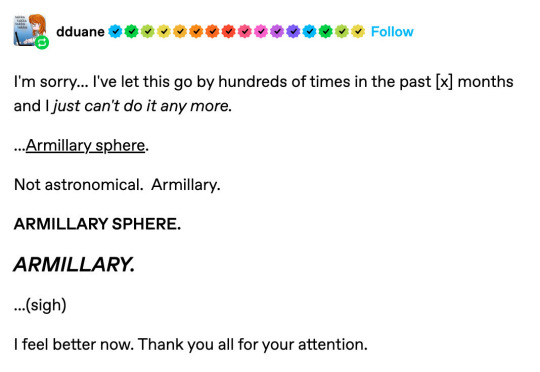
**For the people asking I found the ring HERE
#funny#lol#haha#humor#meme#memes#art#design#artists on tumblr#tweet#aesthetic#twitter#vintage#dark academia#light academia#photography#creative#creativity#fantasy#science
6K notes
·
View notes
Text

Regulus, Lion's Heart
513 notes
·
View notes
Text
Okay. This is a pretty big deal in the world of mycology. Historically fungi have been divided up into either parasites that siphon resources from plants, mutualists that cooperate with them, or saprotrophs that break down decaying organic matter (plant and otherwise.) The genus in question, Mycena, has traditionally been made of saprotrophic species feeding on decaying wood.
However, what scientists are observing is Mycena fungi displaying primitive mutualistic behaviors, specifically providing living plants with nitrogen and getting carbon in return from a living partner, or getting to chow down on the plant's remains once deceased. This shows a significant level of adaptability that hasn't been observed in fungi beforehand, though given how much we don't know about fungi there's a good possibility this isn't an unprecedented event.
It doesn't surprise me one bit that we're seeing this in Mycena. These fungi are especially opportunistic; in fact, that mushroom growing out of a frog's skin that we saw a while back was also a Mycena species. Perhaps we need to add bonnet mushrooms to raccoons, dandelions, and other hardy generalists as symbols of scrappy survival in spite of environmental pressures.
#Mycena#bonnet mushrooms#mushrooms#mushroom#fungi#fungus#mycelium#mycology#botany#biology#nature#science#scicomm#evolution#environment#ecology#mutualism#mycorrhizal fungi
490 notes
·
View notes
Text
By studying calcifying organisms, Leanne aims to better understand the impacts of human activity on marine ecosystems. Through her research, she hopes to influence policy that helps protect marine calcifiers in the future.
“Why is this important? The idea is that the more porous the shell, the weaker it is. Mussels need strong, robust shells to protect their inner soft organs—and that strong 3D structure is important for ecosystem function as habitat formers and storm defenses.
Currently, the changes seen in shell porosity are not large enough to influence the material properties, so we aren’t seeing weaker shells just yet. But with further warming in our oceans being predicted, this could potentially lead to even more porous shells, potentially impacting mussels’ function as habitat formers and storm defenses, as well as their ability to protect themselves from predation,” Melbourne explains.
Learn more about her research here.
#science#museum#amnh#natural history#nature#marine biology#marine ecosystem#mussels#bivalve#did you know#fact of the day#research#women in stem#climate change#conservation#earth month#earth day
218 notes
·
View notes
Text
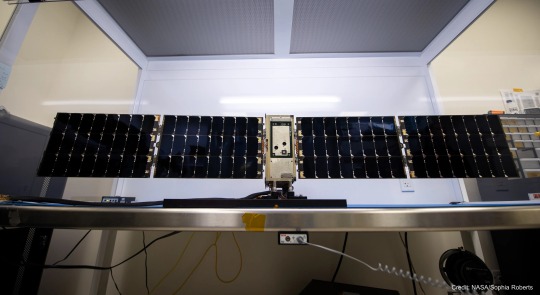
Tiny BurstCube's Tremendous Travelogue
Meet BurstCube! This shoebox-sized satellite is designed to study the most powerful explosions in the cosmos, called gamma-ray bursts. It detects gamma rays, the highest-energy form of light.
BurstCube may be small, but it had a huge journey to get to space.
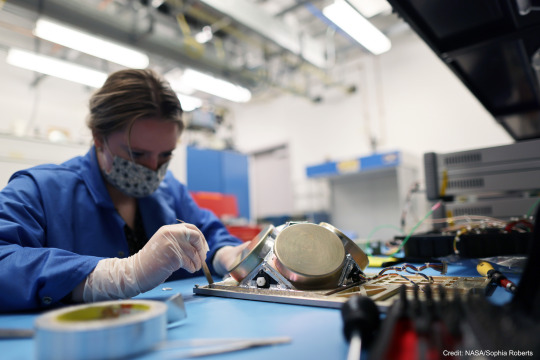
First, BurstCube was designed and built at NASA’s Goddard Space Flight Center in Greenbelt, Maryland. Here you can see Julie Cox, an early career engineer, working on BurstCube’s gamma-ray detecting instrument in the Small Satellite Lab at Goddard.
BurstCube is a type of spacecraft called a CubeSat. These tiny missions give early career engineers and scientists the chance to learn about mission development — as well as do cool science!
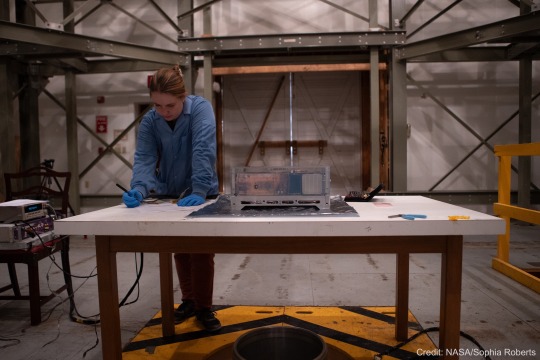
Then, after assembling the spacecraft, the BurstCube team took it on the road to conduct a bunch of tests to determine how it will operate in space. Here you can see another early career engineer, Kate Gasaway, working on BurstCube at NASA’s Wallops Flight Facility in Virginia.
She and other members of the team used a special facility there to map BurstCube’s magnetic field. This will help them know where the instrument is pointing when it’s in space.
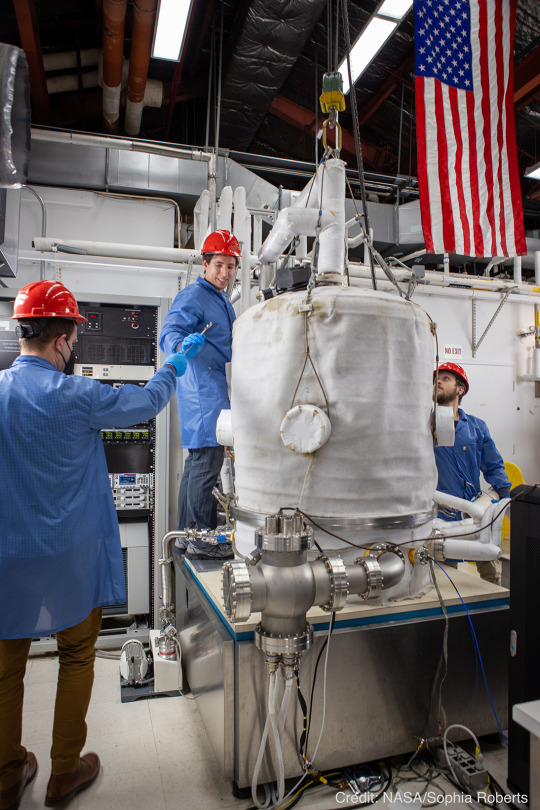
The next stop was back at Goddard, where the team put BurstCube in a vacuum chamber. You can see engineers Franklin Robinson, Elliot Schwartz, and Colton Cohill lowering the lid here. They changed the temperature inside so it was very hot and then very cold. This mimics the conditions BurstCube will experience in space as it orbits in and out of sunlight.
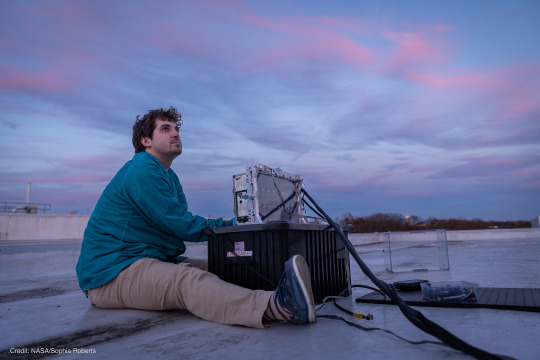
Then, up on a Goddard rooftop, the team — including early career engineer Justin Clavette — tested BurstCube’s GPS. This so-called open-sky test helps ensure the team can locate the satellite once it’s in orbit.
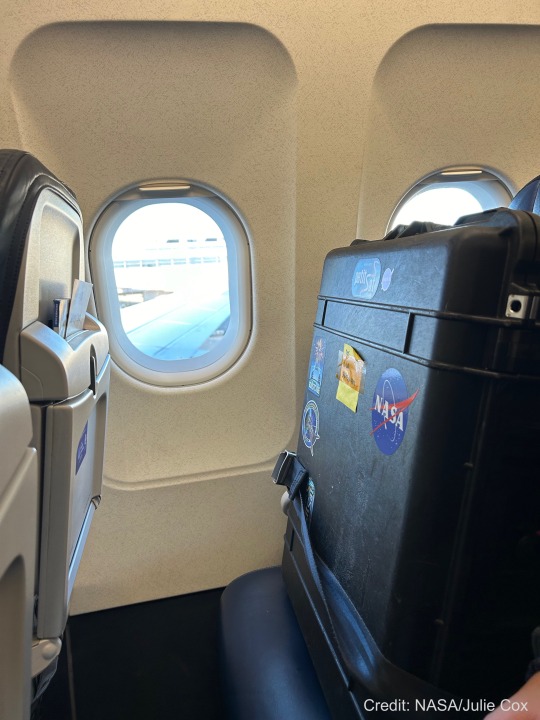
The next big step in BurstCube’s journey was a flight to Houston! The team packed it up in a special case and took it to the airport. Of course, BurstCube got the window seat!

Once in Texas, the BurstCube team joined their partners at Nanoracks (part of Voyager Space) to get their tiny spacecraft ready for launch. They loaded the satellite into a rectangular frame called a deployer, along with another small satellite called SNoOPI (Signals of Opportunity P-band Investigation). The deployer is used to push spacecraft into orbit from the International Space Station.
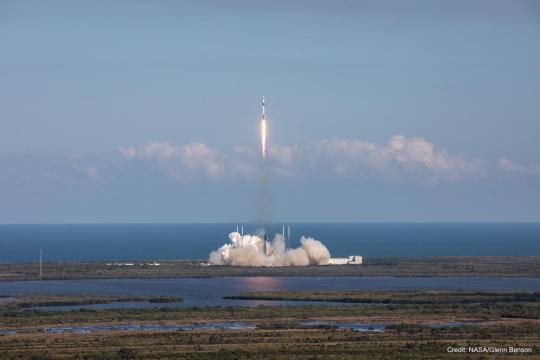
From Houston, BurstCube traveled to Cape Canaveral Space Force Station in Florida, where it launched on SpaceX’s 30th commercial resupply servicing mission on March 21, 2024. BurstCube traveled to the station along with some other small satellites, science experiments, as well as a supply of fresh fruit and coffee for the astronauts.
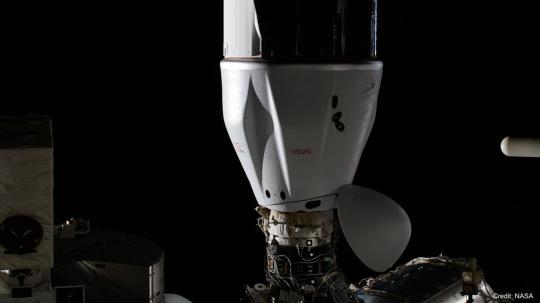
A few days later, the mission docked at the space station, and the astronauts aboard began unloading all the supplies, including BurstCube!
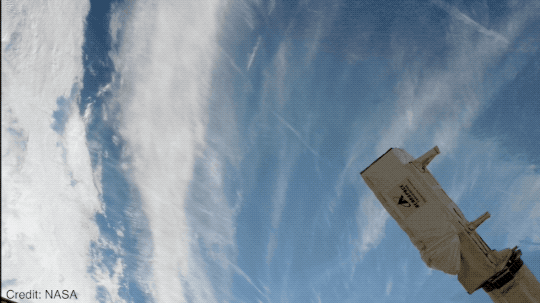
And finally, on April 18, 2024, BurstCube was released into orbit. The team will spend a month getting the satellite ready to search the skies for gamma-ray bursts. Then finally, after a long journey, this tiny satellite can embark on its big mission!
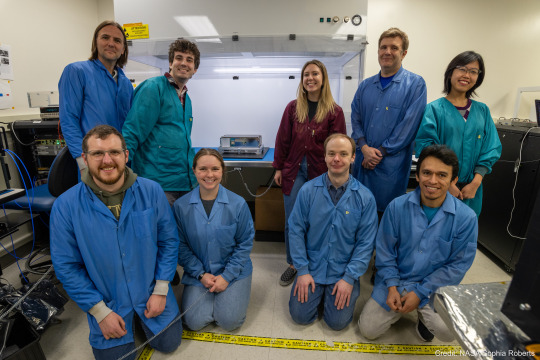
BurstCube wouldn’t be the spacecraft it is today without the input of many early career engineers and scientists. Are you interested in learning more about how you can participate in a mission like this one? There are opportunities for students in middle and high school as well as college!
Keep up on BurstCube’s journey with NASA Universe on X and Facebook. And make sure to follow us on Tumblr for your regular dose of space!
#tech#technology#dream job#jobseekers#NASA#space#spaceblr#universe#astronomy#science#gamma ray bursts#cubesat#smallsat#launch
252 notes
·
View notes
Text

Kedileri , köpekleri , kızı için peçete satan anneleri , anneleri , çocukları , yalnız çocukları , ağaçları , sardunyaları , küs kaldıklarını , hastane koridorlarında yere bakanları yalnız bırakanları , ara sıra onu , onları ... olmayanları ... hiç olmayacakları ....
Severken geçiyor ....
Acı , sarı ve uykulu geçiyor zaman ....
#cute#guotes#photography#picture#aesthetic#art#beautiful#motivation#my emotions#romantic#flowers#floral#daises#flower#nature#naturecore#dark academia#dark aesthetic#cotl#cottagecore#cottage aesthetic#mountains#wanderlust#landscape#travel#artists on tumblr#trees#forest#science#alternative
170 notes
·
View notes
Text

Odda, Norway 🇳🇴
176 notes
·
View notes
Text
Strange little star-fruit of a jagged ambush bug
👀


182 notes
·
View notes
Text

Clearest photo of Pluto ever taken
#pluto#planet pluto#solar system#astronomy#astronomers#nasa#universe#astrophotography#nasa photos#astrophysics#outer space#nasawebb#hubble space telescope#i love astronomy#astronomy facts#astrography#astro community#astro notes#astro observations#astroblr#space exploration#space#science#science facts#planetary science#cosmos#the universe#galaxy#galaxies#planetary nebula
178 notes
·
View notes
Text
youtube
Venture into the deep past of the cosmos with Crash Course Pods: The Universe. In episode one, John Green and Dr. Katie Mack start at the beginning -- the first 60 seconds of the universe 13.8 billion years ago.
Episode one is out now! Listen on YouTube or wherever you get your podcasts!
#crash course#john green#science#education#Dr. Katie Mack#astrophysics#astronomy#deeptime#podcast#Youtube
164 notes
·
View notes
Text
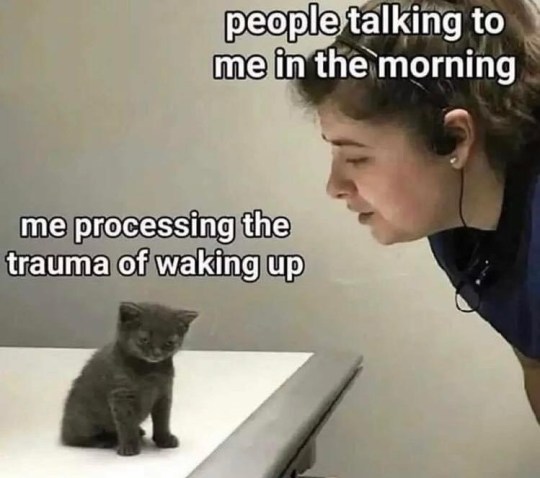
#funny#lol#haha#humor#meme#memes#art#design#artists on tumblr#tweet#aesthetic#twitter#vintage#dark academia#light academia#photography#creative#creativity#fantasy#science
3K notes
·
View notes
Text

NGC 6164, Dragon's Egg
558 notes
·
View notes
Text
Deep-sea ASMR brought to you by a robot unspooling a cable. 〰️
MBARI's underwater hydrophone sits on the seafloor about 30 kilometers (18 miles) from shore, just west of Monterey Bay. It is attached (by this neat neon cable) to the MARS undersea cabled observatory, which carries data from the hydrophone back to shore.
Although the MARS hydrophone is located on the deep seafloor, most of the sounds it picks up are from animals and activities higher up in the water or even at the sea surface. For example, it is common for the hydrophone to pick up the calls of sea lions, dolphins, and other near-surface animals, as well as the sounds of rain, waves, and wind blowing over the sea surface.
Interested in listening to the ocean soundscape? Anyone can eavesdrop on sounds in the deep sea via a continuous audio stream that carries live sound from 900 meters (3,000 feet) below the surface of Monterey Bay. Start your auditory adventure here.
94 notes
·
View notes
Text
By modifying a refrigerator commonly used in both research and industry, researchers at the National Institute of Standards and Technology (NIST) have drastically reduced the time and energy required to cool materials to within a few degrees above absolute zero.
The scientists say that their prototype device, which they are now working to commercialize with an industrial partner, could annually save an estimated 27 million watts of power, $30 million in global electricity consumption, and enough cooling water to fill 5,000 Olympic swimming pools.
Continue Reading.
140 notes
·
View notes
Text


It's time for Fossil Friday! Meet Cryptocleidus oxoniensis, a short-necked plesiosaur. Plesiosaurs were large marine reptiles that lived from the late Triassic to the end of the Cretaceous. The plesiosaurs had extensive modifications to the shoulder and pelvic girdles: these elements form large, flat sheets of bone, presumably for the attachment of swimming muscles. Cryptocleidus' trunk was very rigid and short, and the short tail could only function as a rudder, leaving the limbs as its main organ of propulsion.
Photos: © AMNH
Image 1: Cryptocleidus on display in the Museum.
Image 2: Photographic negative of the fossilized remains of Cryptocleidus, circa 1910.
#science#amnh#museum#fossil#nature#natural history#animals#paleontology#plesiosaur#cretaceous#triassic#cool animals#ancient animals#fossil friday
171 notes
·
View notes
Text
Hot amateur milfs NUDE on LIVE shows!
#sexy tease#sexy content#sexy titts#science#sexy breast#sexy pose#eat my pussy#wet ass pussy#lick my pussy#use my pussy#pussyplay#online#18+ only#onlyf@nz#+18 or +adult only#onlytease#beautiful women#woman#mature woman#reels#reelsvideo#hot as fuck#fyp#curvy girls#curvy body#curvy and cute#curvy chicks#so hot 🔥🔥🔥#hot nude#hot as hell
87 notes
·
View notes